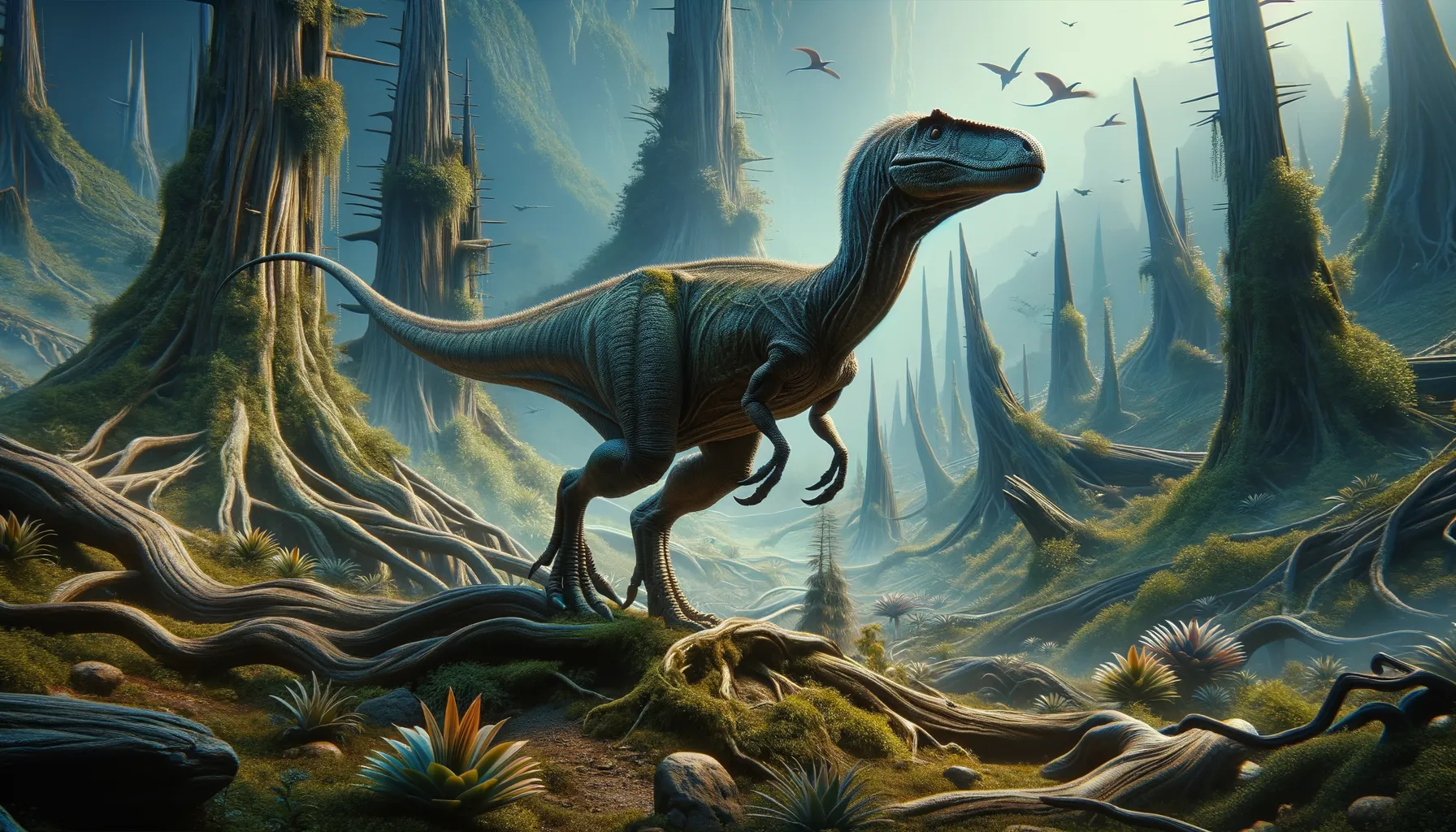
Orthomerus
Swift survivor from ancient European lands.
Period
Cretaceous
Length
Up to 6 meters in length from head to tail.
Height
Approximately 1.5 to 2 meters at the hip.
Weight
Estimations suggest between 300 to 500 kilograms.
Orthomerus was a medium-sized herbivorous dinosaur that roamed the earth during the late Cretaceous period. With its sleek body, it was well-adapted to moving quickly through its environment. Known primarily from fragmentary fossils, this creature offers glimpses into the rich diversity of dinosaur life in ancient Europe. Despite its elusive nature, each discovery of its remains adds to our understanding of the ecosystems it inhabited.
Diet
Orthomerus primarily fed on a diet of plants. It likely grazed on low-lying vegetation, using its beak to tear leaves and stems. Its diet would have been abundant, relying on the rich foliage available in its environment.
Hunting
As a herbivore, Orthomerus did not hunt other animals. Instead, it would have been constantly on the move, browsing for suitable plants. Its speed and agility helped avoid predators, ensuring it could continue feeding in peace.
Environmental challenges
Orthomerus faced various environmental challenges such as climate fluctuations and the presence of predators. Changing plant growth due to shifts in climate could impact its food availability. Larger predators in its ecosystem posed constant threats, necessitating vigilance and speed for survival. Additionally, competition among other herbivores for resources would have influenced its feeding patterns.
Speed
Estimated to be moderate, capable of running swiftly on all fours.
Lifespan
Likely similar to modern-day reptiles, perhaps several decades.
First discovery
Discovered in the 19th century in the Netherlands.
Fun Facts
- Orthomerus was a small dinosaur that lived during the Late Cretaceous period, roughly 70 to 66 million years ago.
- This dinosaur's name means 'straight femur,' referring to a notable feature of its thigh bone.
- Orthomerus belonged to a group of dinosaurs known as hadrosaurs, also known as 'duck-billed dinosaurs.'
- Fossils of Orthomerus have been found in Europe, which was a group of scattered islands during the Late Cretaceous.
- Unlike some of its larger duck-billed relatives, Orthomerus was relatively small, likely reaching only about 2 meters in length.
- The diet of Orthomerus would have consisted mostly of plants, making it a herbivore.
- Orthomerus's fossils are not complete, and much of what we know is based on comparisons with more complete hadrosaur fossils.
Growth and Development
From a young age, Orthomerus grew rapidly to reach a size that could deter predators. This rapid growth required a plentiful supply of nutrients from its environment. Juveniles likely stayed in groups with adults for protection. As it matured, its skeletal structure developed to support its fast running abilities.
Habitat
Orthomerus thrived in lush, forested areas with an abundance of plant life. It likely preferred regions close to water sources, ensuring a consistent supply of food and hydration. The environment would have varied from wetland ecosystems to drier, open woodlands. Such habitats supported their grazing needs and provided cover from predators.
Interaction with other species
Orthomerus likely shared its habitat with other herbivorous dinosaurs, leading to potential competition. It also coexisted with multiple predators, causing it to develop tactics for evasion. Interactions with smaller creatures may have been limited, given the size difference. Symbiotic relationships could have existed if certain plants thrived under grazing by Orthomerus.
Natural lifespan
Orthomerus might have lived around 20 to 30 years in the wild.
Reproduction
Like many dinosaurs, Orthomerus likely reproduced by laying eggs. Nesting sites would have been chosen in areas where eggs could be hidden from predators. Parental care, if present, might have involved guarding the nest or helping juveniles find food. Hatchlings were likely precocial, able to move and graze soon after birth.
Social behaviour
Orthomerus possibly exhibited social behaviour, moving in herds for mutual protection. Listening to evolving trends in herding, individual members maintained close bonds with others. Communication within the group might have involved vocal calls or body movements to signal danger or coordinate group movement.
Fossil locations
Fossils of Orthomerus have been unearthed in European sites, primarily in the Netherlands. These discoveries often consist of partial skeletal remains, offering a limited view of the dinosaur's full anatomy. Each find contributes significant data on the biodiversity of the Cretaceous period in Europe and helps to map the distribution of hadrosaurids in ancient ecosystems.
